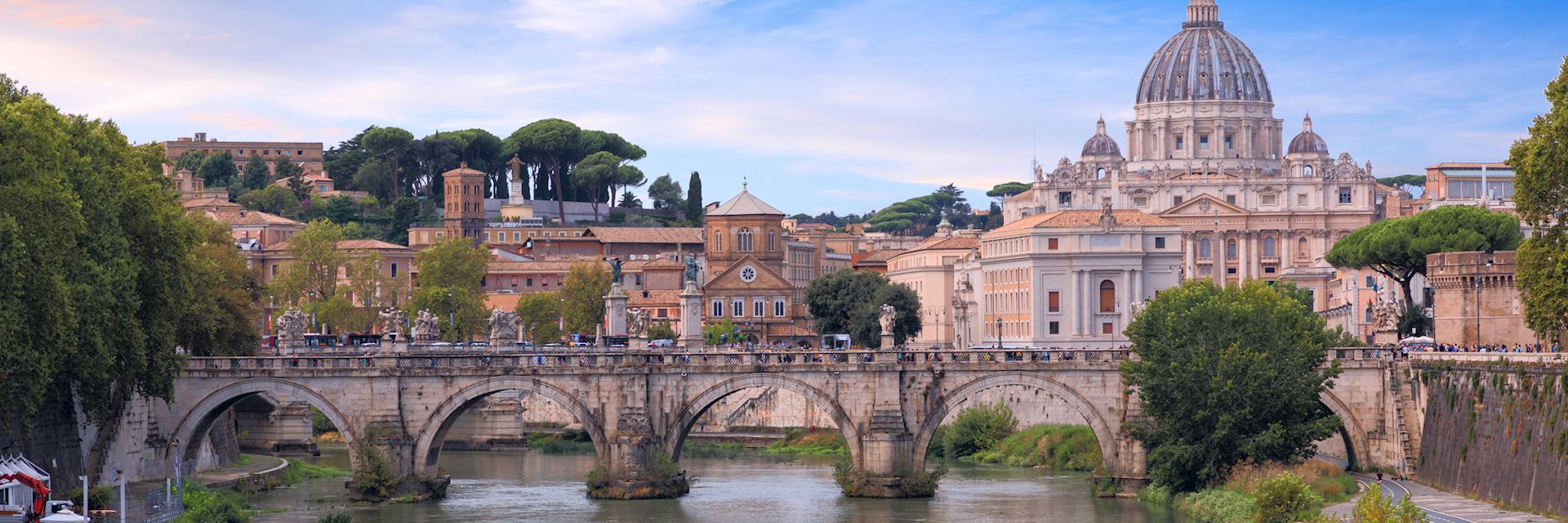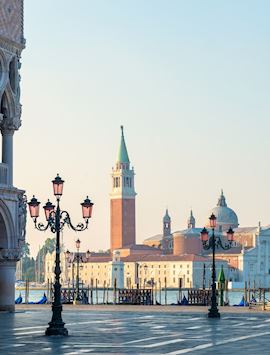By Italy specialist Kimberly
You can trace a continuous line of Western art history through Italy’s many galleries, museums and churches, beginning with Roman statues, running through the marble majesty of Michelangelo’s David and continuing today, with Venice’s Biennale.
Of course, that extraordinary wealth of art attracts extraordinary crowds. It can be hard to admire the subtle genius of Raphael’s brushwork when you’re crammed into a hot room with hundreds of other people. Whether you want to delve deeply into the artistic offerings or simply see the highlights, it pays dividends to plan your visit to Italy’s art cities carefully.
Rome
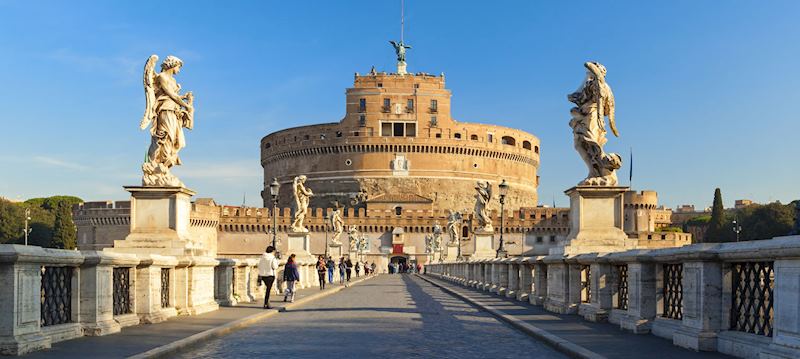
When I had the opportunity to live abroad for a year as a student, I chose to live in Rome. The city is almost an open-air museum — just stroll across the Ponte Sant’Angelo, with its ten statues of angels designed by Bernini, to see what I mean. The minute detail of the angels’ wings and the fluid movement in their gestures seems to transcend the stone medium.
The Vatican Museums
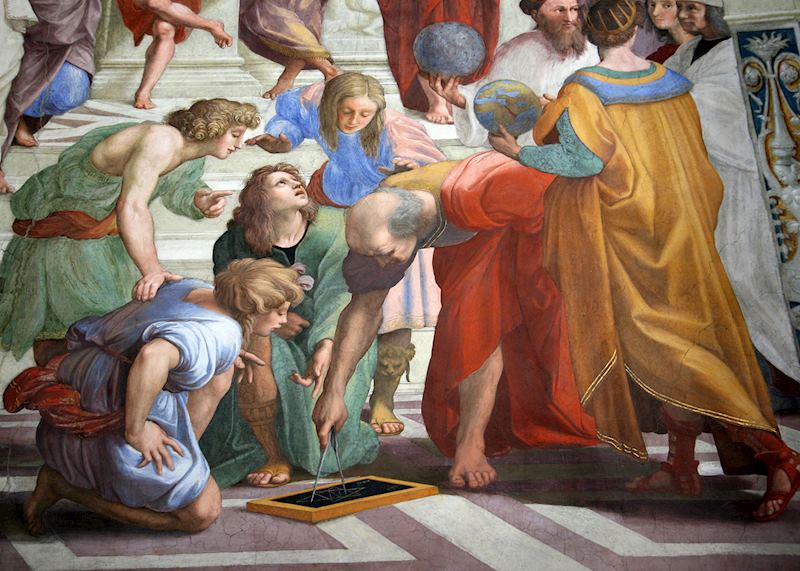
Popes and other high officials in the church not only collected works, they also provided patronage for many of the world’s great artists over the centuries. Consisting of more than 50 galleries and containing 70,000 pieces, the Vatican Museums collectively make up one of the largest museums in the world.
The vast collection spans all of human history, from Etruscan bronzes and classical Greek sculptures to works by Salvador Dalí. Amid all this diverse abundance, however, the showstoppers are the Renaissance pieces.
The Stanze di Raffaello, known to English speakers as the Raphael Rooms, were originally intended to be a suite of private rooms for Pope Giulio II. The frescoes, which cover four rooms, took Raphael and his assistants 16 years to complete.
For me, the most compelling fresco is The School of Athens, which depicts a convocation of the greatest mathematicians and philosophers of antiquity. The organic muscularity of the figures and their flowing robes contrast with the precisely painted architecture and almost mathematical rendering of the single-point perspective.
The Sistine Chapel
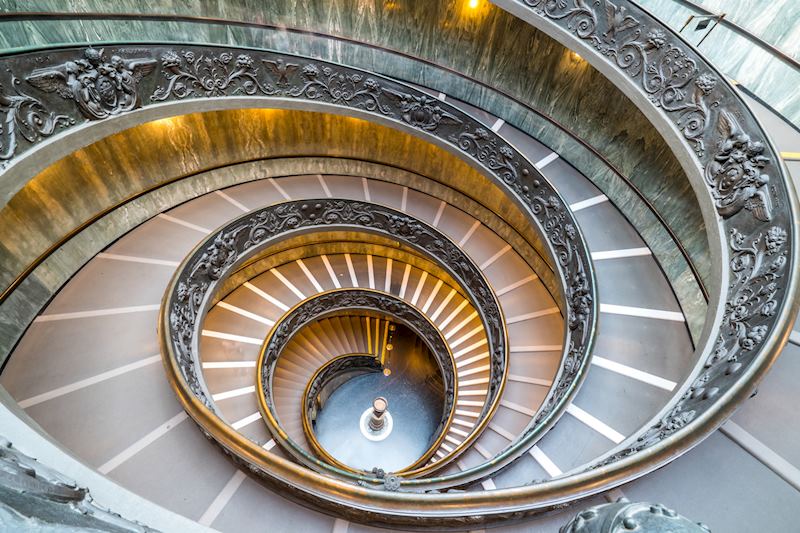
Within the Sistine Chapel’s modest confines (it's not as big as you might think), you’ll see not one but two of Michelangelo’s masterworks: the ceiling frescoes and his Last Judgement.
The nine ceiling panels depict stories from the Book of Genesis, including the oh-so-familiar The Creation of Adam, typified by Michelangelo’s muscular composition, jewel-tone palette and expert use of chiaroscuro.
Painted on the west wall, The Last Judgement was commissioned more than two decades after the renowned ceiling was completed. Though it’s much smaller than the monumental ceiling frescoes, it took much longer for the painter to complete. A massive and moving fresco, it spotlights Michelangelo’s mastery of the male nude figure, with its resurrected hosts floating up to heaven or being dragged down to hell. It’s impossible to take it all in at once. Instead, the natural flow of the composition moves your eye around the wall.
Though it’s a little overshadowed, I particularly enjoy the Galleria delle Carte Geografiche (the Gallery of Maps). The long, narrow arcade is frescoed with Ignazio Danti’s 40 topographical maps of Italy, each so precisely rendered it seems almost three dimensional. The murals have been painstakingly restored to their original grandeur.
The Vatican Museums can get claustrophobically crowded. On a busy day, the press of humanity can turn what ought to be a transcendent experience into a dull slog. To combat this, I recommend you time your trip carefully. If you visit early in the morning, when the museums first open, you can beat most of the rush. Also, on Fridays during the summer, the museums stay open until 8 pm, and the crowds are much more navigable.
I also strongly suggest visiting with a private guide, who’ll help steer you past the worst of the traffic jams and add context to what you’re seeing. What’s more, because the Vatican Museums are simply too large to cover in one visit, your guide can help ensure you see what’s important to you, whether that’s works by Raphael or the museums’ Collection of Contemporary Art.
An important note: During the busiest seasons, the most popular rooms can sometimes reach capacity and the museum officials shut them down.
Museo e Galleria Borghese
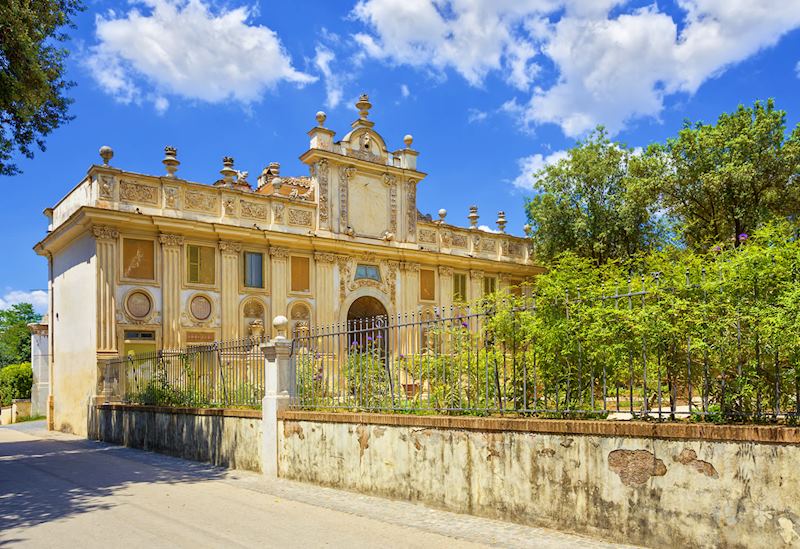
Across the Tiber River from the Vatican, the Borghese Gallery is sometimes called ‘queen of private art collections’. Formed in the early 17th century by Cardinal Scipione Borghese, it includes paintings by the likes of Raphael, Caravaggio and Titian, as well as some of Bernini’s most impressive sculptures. Unlike the Vatican Museums, you can see the whole thing in just a few hours.
The first-floor sculpture gallery includes Bernini’s Ratto di Proserpina (The Rape of Proserpina). It spotlights Bernini’s mastery of marble — Pluto’s fingers sink deeply into the soft flesh of Proserpina’s thigh, the indentations so lifelike that it’s hard to believe it was carved from cold stone.
The picture galleries display many of the Renaissance greats, including Caravaggio’s darkly disturbing Davide con la Testa di Golia (David with the Head of Goliath). Some critics believe it’s a self-portrait, with a younger Caravaggio holding the severed head of an older one.
Galleria Doria Pamphilj
Rome’s other great private museum, the Doria Pamphilj contains works by Bernini, Raphael, Tintoretto, Titian and Caravaggio. The cavernous rooms are hung with huge, gilt-framed paintings from floor to ceiling, a style popular in the 18th century when the Pamphilj family acquired the palazzo.
I’m particularly fond of Velázquez’s Baroque portrait of Pope Innocent X, a member of the Pamphilj clan, which depicts the Holy Father as a stern, shrewd man. The current scion of the family narrates the audio guide, peppering the information with entertaining family legends and historical information.
Venice
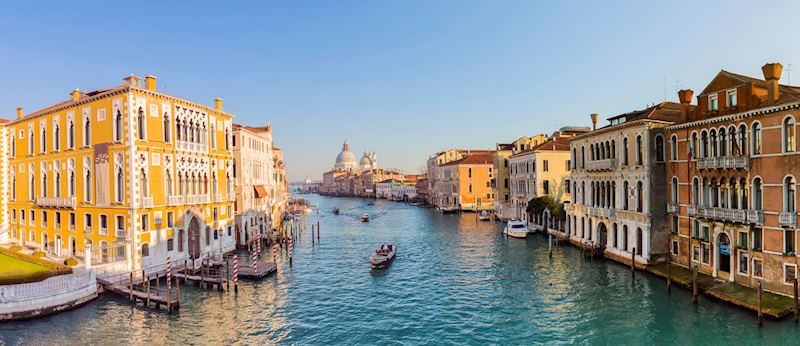
Last time I visited Venice, I was taking a water taxi through the city’s canals on a particularly hot, humid day. As we entered the Grand Canal, I was struck by a surreal sight that made me forget the sweat trickling down the back of my neck. Two enormous white hands, reproduced in oversized but exacting detail, emerged from the water. Fingertips pressing to the walls of the Ca’ Sagredo Hotel, they seemed to hold the old palazzo up out of the waters that lapped around its base.
I learned later that the piece was created by Lorenzo Quinn and entitled Support. It offered a commentary on climate change, a serious threat to this centuries-old, water-bound city.
To me, this one piece of temporary public art entirely encapsulated the essence of Venice. The city’s passion for art knows no bounds, embracing styles and elements from all eras and traditions. Eastern, Western, modern or Renaissance, Venice loves it all.
St Mark’s Basilica
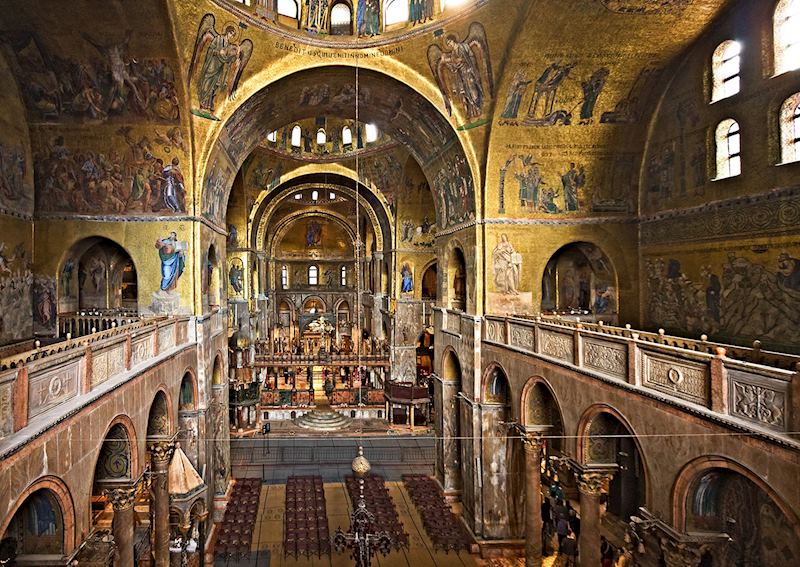
Much of Venice’s wealth comes from its long history as a hub of trade with the Ottoman Empire. The city received special dispensation to carry on trade with non-Christians thanks to an incident in the 9th century, when wily Venetian merchants smuggled the corpse of Saint Mark, the Bishop of Alexandria, out of Egypt in a shipment of pork.
Saint Mark is interred in the Basilica di San Marco, or St Mark’s as most know it. Built in 932, it’s a Byzantine-inspired confection of bulbous domes and filigreed stone arches, the lunettes above the front doors filled with mosaics.
The basilica reflects not only the city’s great wealth but also the source of that wealth. Aside from the Eastern influence in the design, the layout is a Greek cross and the pale marble of the walls came from Egypt and Palestine.
The building dazzles. Many of the glass tiles in the intricate mosaics are backed with 24-carat gold leaf, intended to represent the light of God. On the high altar, the Pala d’Oro (Cloth of Gold) is a Byzantine masterwork in enamel, gold and silver, encrusted with thousands of gemstones.
As in the Vatican Museums, a private guide can help you put the whole display into context, both artistic and historical, as well as guide you through and around the basilica’s other visitors.
Peggy Guggenheim Collection
Diametrically opposed to the lavish history of St Mark’s, the Peggy Guggenheim Collection is a compact museum devoted to the heiress’s personal collection of 20th-century artwork.
After World War II, the eccentric Guggenheim took up residence in the Palazzo Venier dei Leoni, an unfinished, single-storey 18th-century palace on the Grand Canal. As a passionate advocate for modern art, she bought and displayed works that suited her fancy, including pieces by Picasso, Dalí, Pollock (whom she’s credited with discovering), Kandinsky, Man Ray, Rothko, Mondrian, Calder, and her ex-husband, Max Ernst.
It’s easy to take in the whole museum — including the sculpture garden and whimsical museum shop — in just a few hours.
Those with children and modest sensibilities take note: At the entrance, you’ll get an eyeful of Marino Marini’s sculpture The Angel of the City, which depicts a nude man who is, indeed, happy to see you.
La Biennale di Venezia
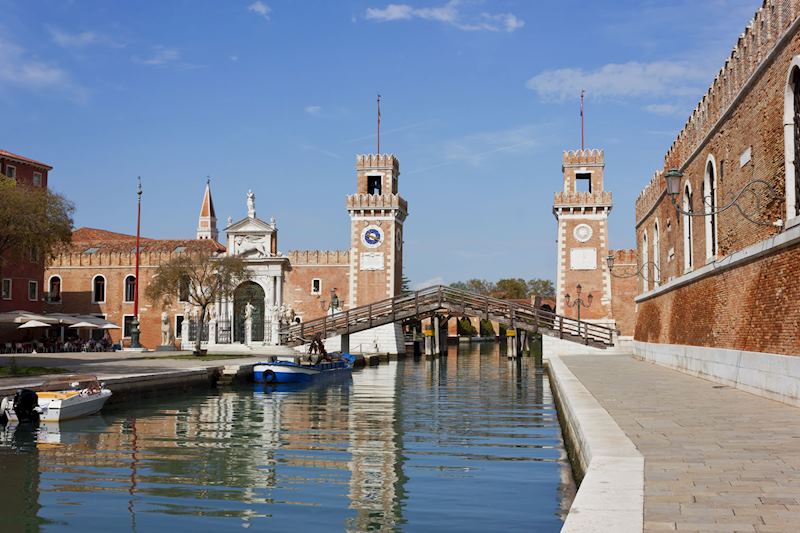
On the odd-numbered years since 1895, Venice has hosted one of the world’s largest and most prestigious art shows. Dozens of national pavilions showcase talent from more than 80 countries, including painting, dance and architectural works, among other mediums. The works in the main exhibit are assembled by a guest curator based on a central theme.
Many of the pavilions and exhibit spaces are on the Giardini, parkland designed to host the Biennale. As the festival has grown, it has overflowed the space, taking up rented galleries around the port and the city’s former shipyard, the Arsenale.
The Biennale can make an already busy city even more packed. Hotels during the festival fill up far in advance and are very expensive, so you may want to avoid Venice during those months if you don’t have a passion for modern art.
Ca’ Pesaro
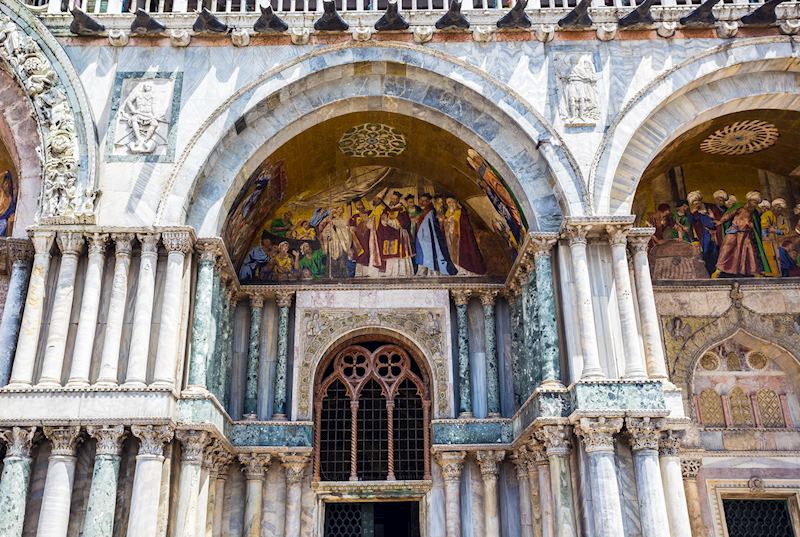
On a busy summer day, St Mark’s Square is teeming with visitors and the humid air can get thick with the smell of low tide and overheated sightseers. On those days, I head for the Galleria Internazionale d’Arte Moderna at Ca’ Pesaro.
Stepping inside the cool, dim interior of this 17th-century Baroque palace is a relief. Often, you’ll be one of just a handful of visitors, wandering through the grand hallways and soaking up the collection of 19th- and 20th-century art.
Many of the works displayed here were once in the Biennale, as well as pieces by Klimt, Chagall, Kandinsky, de Chirico, Miró, and Moore.
Up a set of somewhat rickety stairs, you find the Museo d’Arte Orientale. Consisting of more than 30,000 items, the collection was acquired on an outrageously indulgent shopping spree across Asia undertaken by Prince Enrico di Borbone for three years in the late 1880s. Highlights include a stately samurai cuirass made from lacquered scales, Edo-era netsuke and a pierced golden palanquin, as well as a chess set from China.
Florence
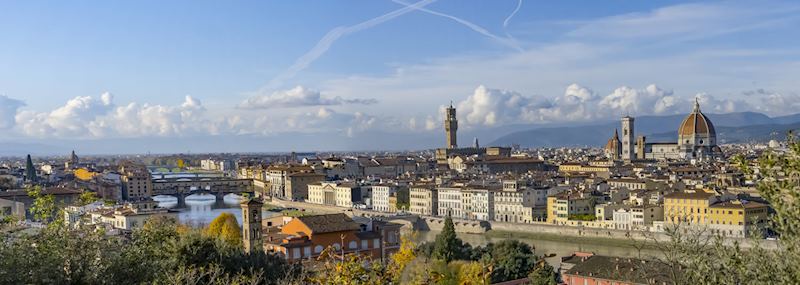
It may lack the diversity of Venice or Rome — you won’t find much Baroque or modern art here — but Florence boasts some of the best-known Renaissance works in the world.
This profusion of art fills the city, not just the museums. You could spend weeks just drifting in and out of churches, where, for a few euros (or for free), you can see works by Renaissance masters tucked into quiet sanctuaries or behind empty altars. The buildings themselves are works of art.
Galleria degli Uffizi

I’ll be honest — the Uffizi is always crowded. As the home to the single greatest collection of Renaissance art, including some of the best-known pieces in the world, it’s a magnet that draws even those who aren’t passionate about art.
But the inconvenience of the crowds pales next to the luminous artworks on display here. All the major Renaissance artists (and many of the minor ones) are represented, including Michelangelo, Botticelli, Da Vinci, Raphael, Titian and Donatello, to name just a few.
Many of these are pieces so ubiquitous that you feel like you know them even before you set foot in Italy — Botticelli’s The Birth of Venus, for example. However, despite this familiarity, I felt a great welling of emotion as I actually stood in front of the enormous canvas and saw the delicate transparency of the tempera paint.
After visiting the Uffizi countless times, I have developed a strategy that begins with visiting early in the day, before the crowds really get dense, or later in the afternoon. A private guide is imperative, not only to navigate around the masses efficiently, but also to help you better appreciate the rich history that surrounds these works.
The Galleria dell'Accademia
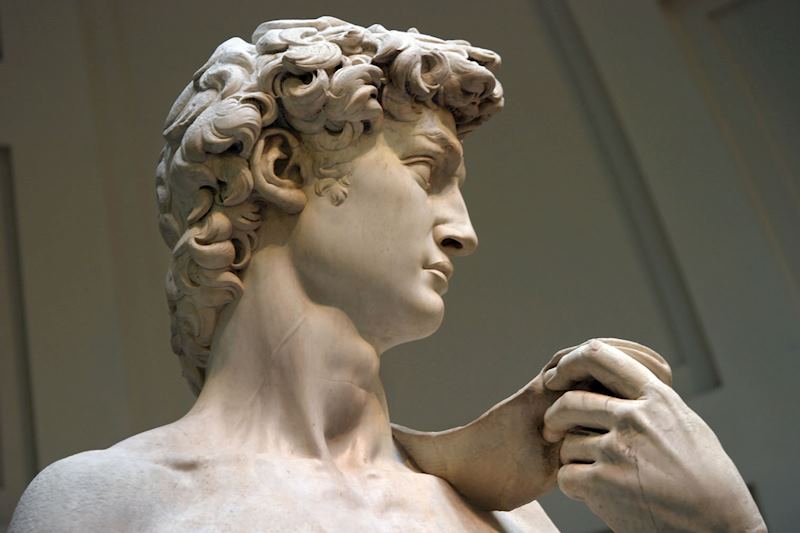
Seeing Michelangelo’s David for the first time — or the tenth — is a visceral experience for almost everyone. I was no exception. Entering the Accademia, it’s almost the first thing you see, framed at the end of a long, narrow gallery built specifically to house it.
The white marble seems to glow under the light that streams in from the skylight overhead. As you walk down the gallery, the sheer scale of the sculpture begins to dawn. I understood for the first time how truly massive it was, twice as big as a tall man.
Up close, you can make out the exceptional detail that made Michelangelo one of the stars of the Renaissance — the lines of tension on David’s face, the exquisitely delineated veins on the back of his hand, the muscles in his calf.
As arresting as David is, it’s not the only thing worthy of note at the Accademia. There are works by the likes of Perugino, Giotto and Giovanna da Milano, as well as other pieces by Michelangelo. I’m particularly fond of his unfinished Slaves, the muscular figures seeming to struggle to release themselves from the raw marble. (Some critics believe that he intentionally left them unfinished, a meditation on humanity’s eternal quest to escape its material constraints.)
Unlike the sprawling Uffizi, the Accademia is easy to enjoy without a guide. Though there are crowds around David, the rest of the collection is much less busy and very accessible.
Museo del Convento di San Marco
In the mid-1400s, a Dominican monk and painter called Fra Angelico frescoed the interior of his friary. From the monks’ cells to the cloisters, he lined the walls with delicate depictions of holy scenes, intended to elevate the brothers’ spirits in prayer.
This is one of the few places in Florence where the artwork isn’t from the Renaissance — though he worked on the cusp of the era, Fra Angelico’s style is Gothic. That might be why the convent-turned-museum is far less busy than many of the other sites in the city.
It’s a rare chance to see so many historic works entirely in situ, and I find visiting here both restful and uplifting.
Start planning your trip to Italy
Start thinking about your experience. These itineraries are simply suggestions for how you could enjoy some of the same experiences as our specialists. They’re just for inspiration, because your trip will be created around your particular tastes.
View All Tours in Italy
